This exhibition traces the evolution of Royal Doulton figurines during the last century, beginning in the 1890s with the first figurines made at their studios in London and Stoke-on-Trent. Each clay original model was blocked and cased for the production process by a master mold-maker. The figures were slip-cast in earthenware or bone china clay using plaster of Paris production molds taken from the case. A photograph of each figure with its mold number was recorded in a ledger now retained in the Royal Doulton archives. Different color decorations were allocated HN numbers, named after the head artist, Harry Nixon, who taught the first figure painters. They achieved subtle color effects by repeated painting, fusing and firings of enamel colors. The HN number was originally hand-painted on the base of the figure alongside the impressed mold number and the Royal Doulton trademark.
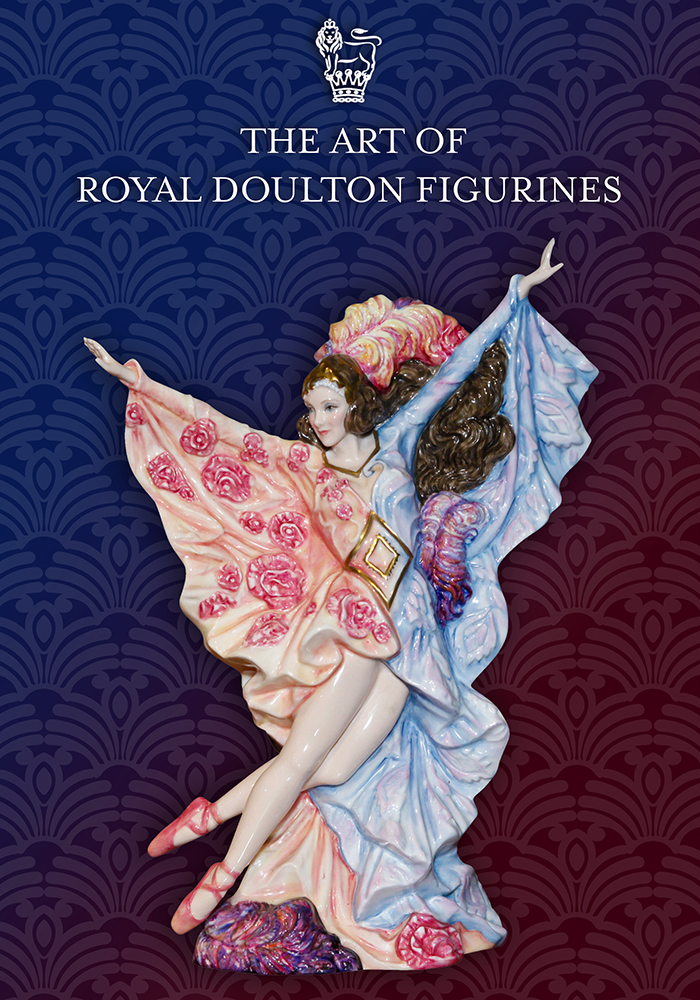
Dancer #4372 by V. Annand 1993

Dancer #4371 by V. Annand 1993
Prototypes
In the Royal Doulton production process, the first figures to be cast from the block or master-mold are known as prototypes. Typically, no more than three figures were taken from the master as the detail diminished with each casting and the block had to be in good condition to make the case and production molds if the figure was approved. The reasons that prototypes did not go into production are varied. With complex and detailed models, the production costs were often too high for the pricing policies of the time. Sometimes management anticipated production problems during the kiln firing or shipping. Occasionally, the art director felt that there were duplications of subject matter in the range or that the model was not good enough. When Royal Doulton began selling their archive collection in the late 1990s, many of their prototype figures were sold to collectors at auctions and private sales.

Art Director Eric Griffiths with prototype figures
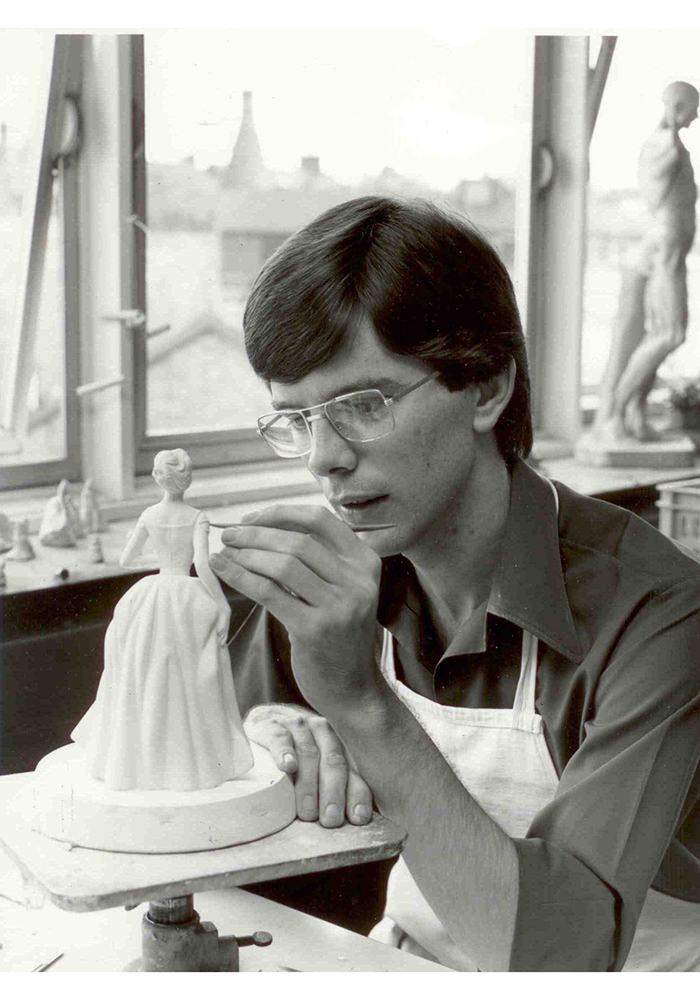
Peter Gee modeling

Mary Nicoll modeling

Slip Casting

Assembling Columbine figure

Percy Curnock Painting a prototype

Marquise Sylvestra the earliest prototype at WMODA
The First Figurines
Figures in terracotta and stoneware were sculpted by artists at Doulton’s Lambeth studio in London during the 19th century. George Tinworth is famous for his Merry Musicians series while John Broad excelled in classical subjects. Brown salt-glazed stoneware was gradually replaced with lighter bodies in the early 1900s, including Carrara ware and white porcelain. At Doulton’s Burslem studio in Stoke-on-Trent, Charles Noke began reviving the art of Staffordshire figures in the 1890s. His ivory colored Vellum figures of famous Victorian actors were decorated initially with pastel shades of pink and green. Experiments with stronger colors followed but commercial success came ultimately with the development of the HN collection. The company received the royal warrant in 1901 and the privilege of the name Royal Doulton.
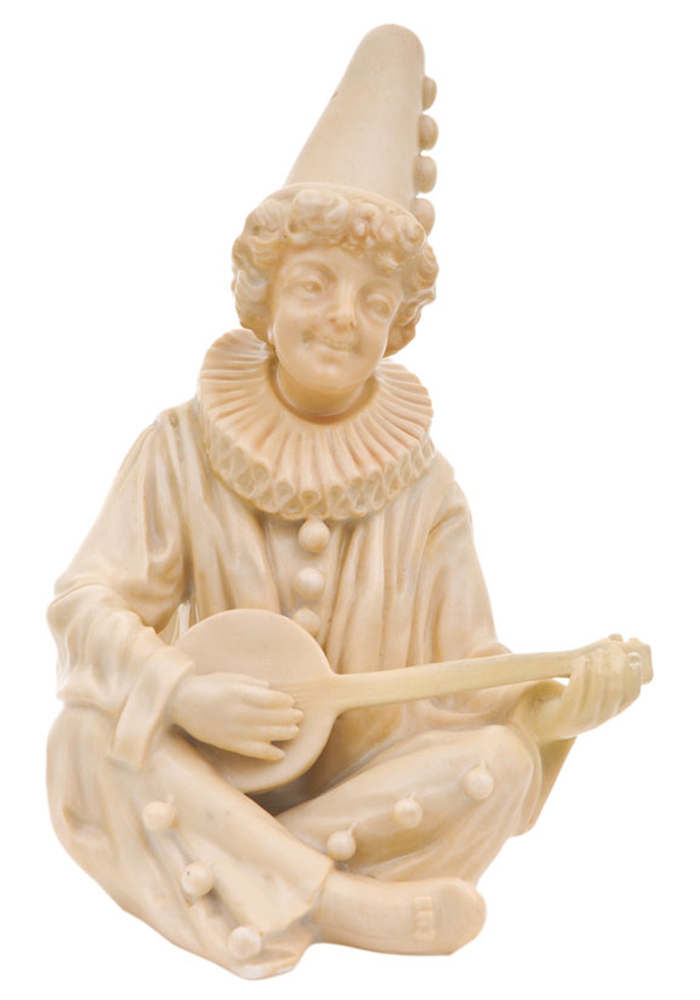
Sentimental Pierrot by C. J. Noke 1899

Jester by C. J. Noke 1892
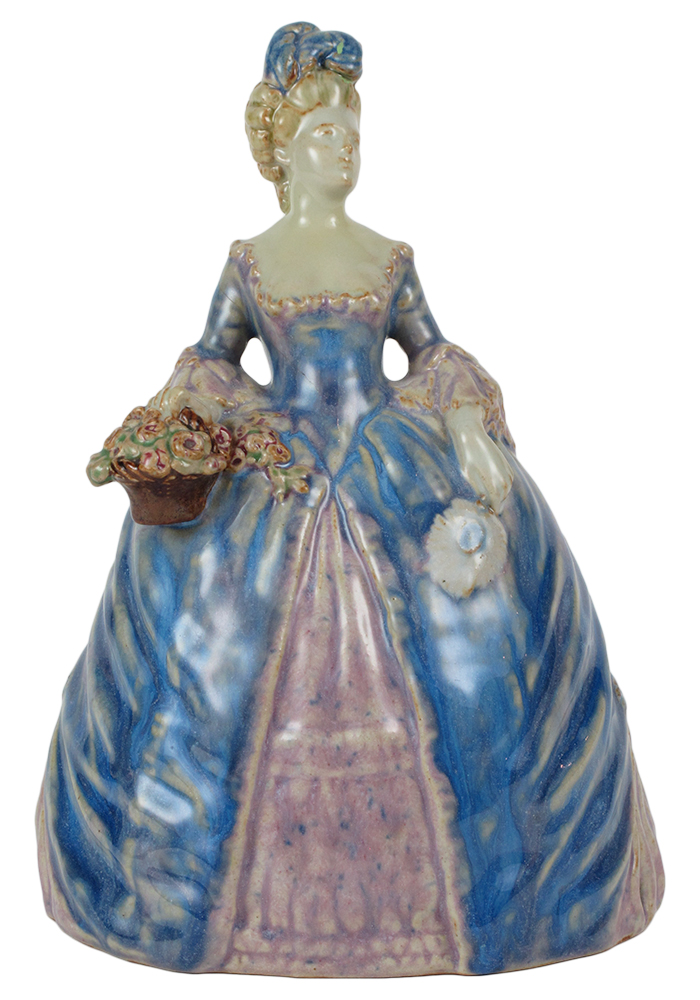
Madame Pompadour by J. Broad c.1920

Georgian Lady by M. V. Marshall c.1890

Beefeater by C. J. Noke 1899

Cleopatra by C. J. Noke 1892
Launch of the HN Collection
Charles Noke began trials for a new series of figures in 1910, assisted by Harry Tittensor, a versatile painter and modeler at the Burslem studio. Distinguished sculptors were invited to visit the Burslem factory and submit ideas for figurative sculptures. Their original clay models were reproduced for the new HN collection which was launched in 1913 during a royal visit to the factory. Queen Mary named the first figure Darling and became a keen collector. Among the early contributors to the HN collection were Royal Academy exhibitors such as Phoebe Stabler, William White and Charles Vyse, formerly a Doulton apprentice. Charles Noke also modeled some figures for his new collection, including long-term classics such as The Jester. World War One, which raged from 1914 to 1918, interrupted figure production.

Darling HN1 by C. Vyse 1913-1928
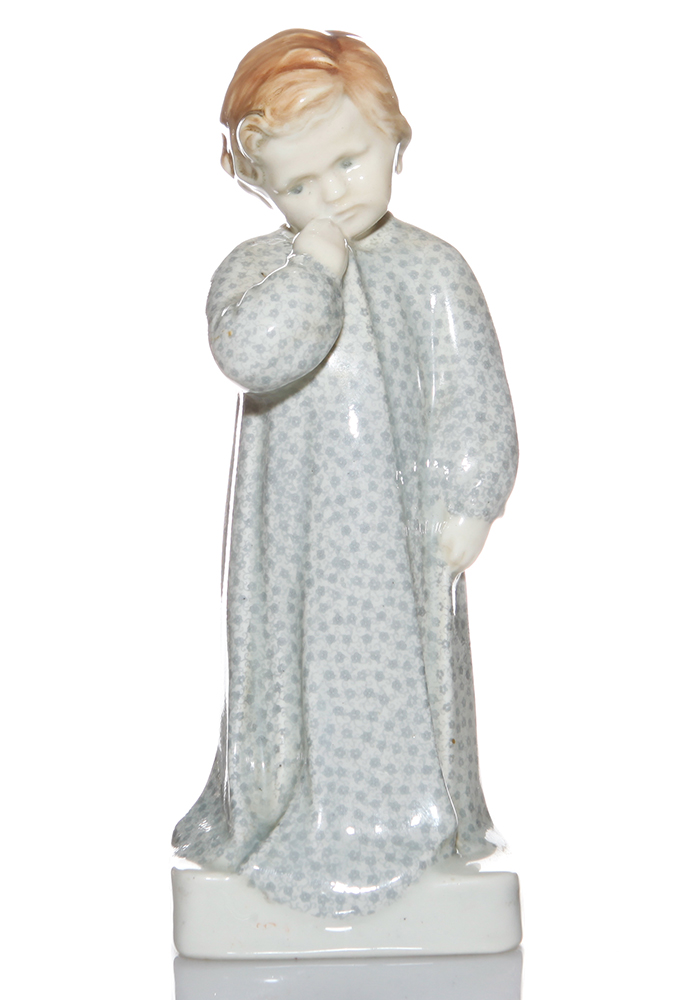
Darling Color Trial by C. Vyse c.1920
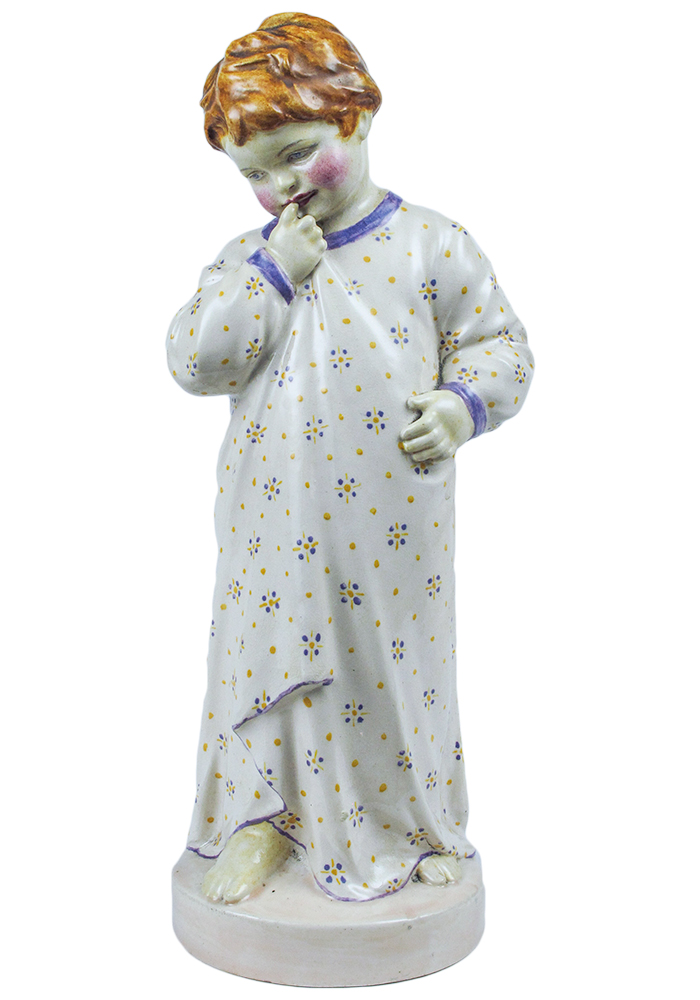
Bedtime by C. Vyse 1920

Robert Burns HN42 by E.W. Light 1914-1938
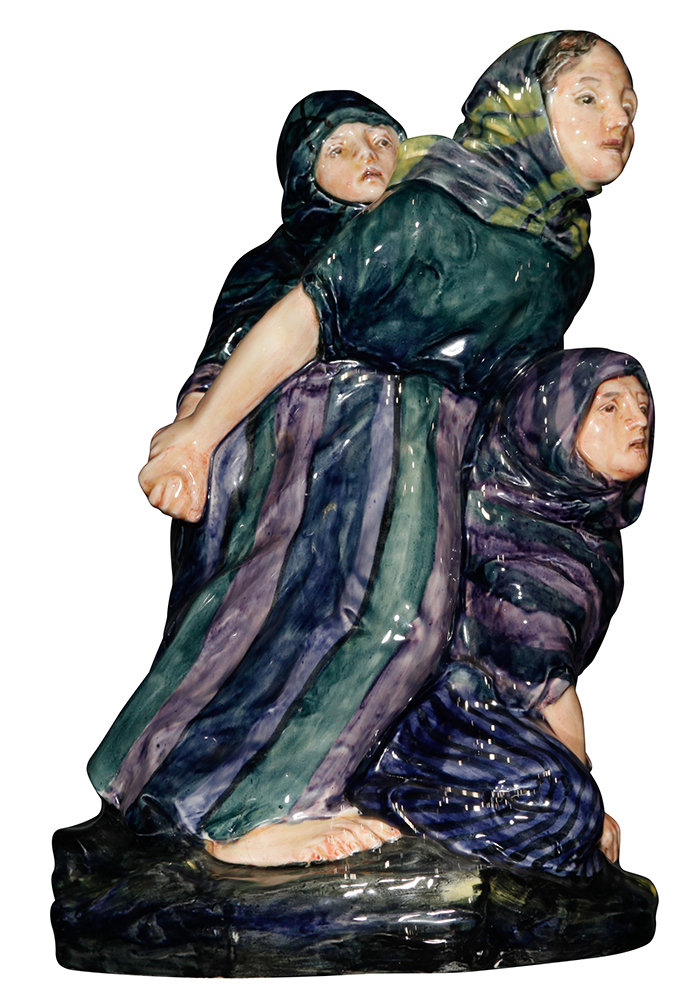
Fisherwomen HN359 by C.J. Noke 1919-1938

The Shepherd HN81 by C.J. Noke 1918-1938
The Vogue of the Statuette
Leslie Harradine began modeling for the HN collection in 1920, following his earlier career at Doulton’s Lambeth factory. His versatility as a modeler was exceptional. He created Jazz Age style figurines alongside nostalgic figurines in Victorian crinolines. He was equally skilled at portraying robust characters, such as his street sellers from old London. Harradine’s work was included at the British Industries Fair in 1920 at the Crystal Palace where the press heralded “The Vogue of the Statuette.” Harradine continued his success at the Paris exhibition of 1925 where he won a silver medal. Such was the demand for his Art Deco style figurines that the figure painting department was expanded to ten artists in 1927. By the end of the 1930s, there were 27 figure painters decorating the most popular figurines in alternative color schemes. For over 30 years, Harradine sent his original clay models from his rural studios to the Burslem factory.

Sketch Girl by L. Harradine 1924
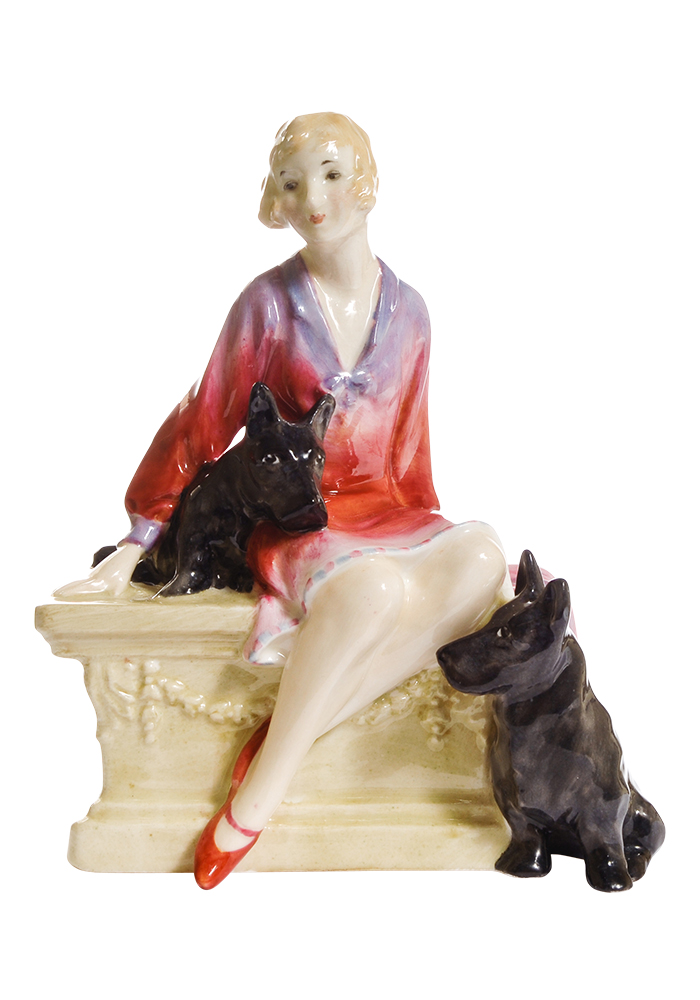
Scotties HN1281 by L. Harradine 1928-1936

Sunshine Girl HN1348 by L. Harradine 1929-1938
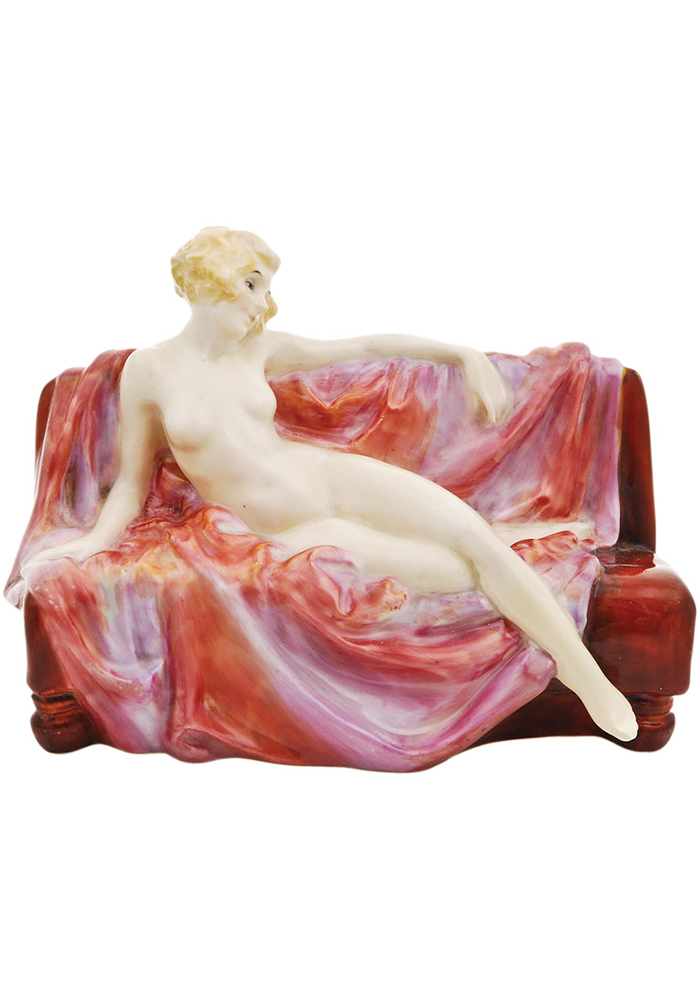
Siesta HN1305 by L. Harradine 1928-1940

Rhythm HN1903 by L. Harradine 1939-1949
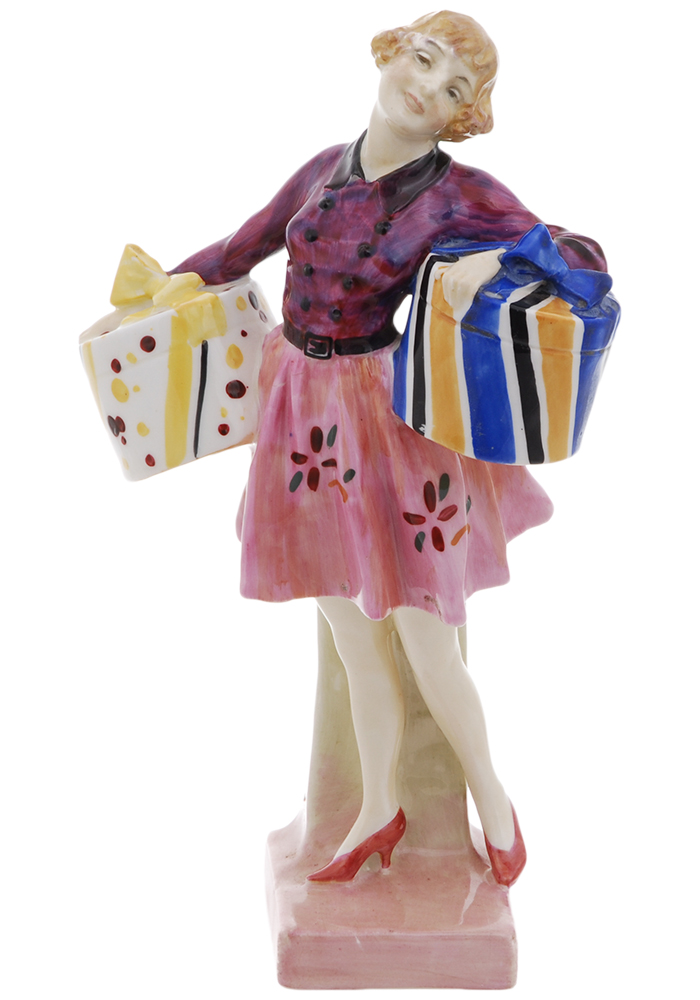
Midinette HN1289 by L. Harradine 1928-1938
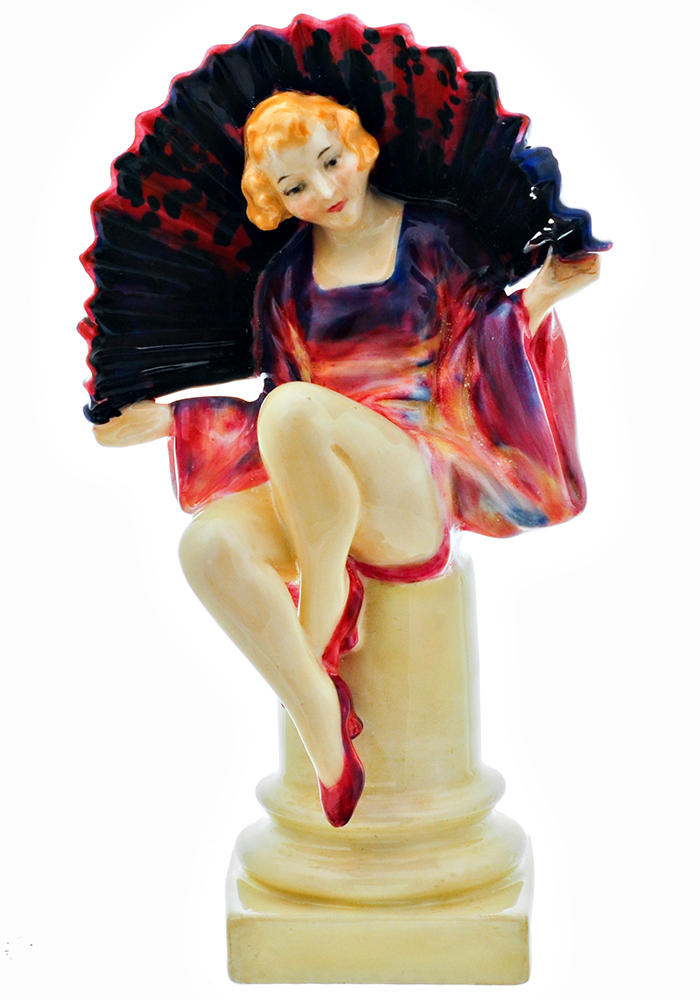
Angela HN1204 by L. Harradine 1926-1940
Perfection in Porcelain
War broke out again in 1939 and the Burslem factory was the first British pottery to be bombed. Undeterred, Noke set up a studio in his garden shed and worked with his new assistant Peggy Davies. When Noke died in 1941 his son, Cecil Jack, took over as Art Director. The upheavals of the war interrupted Harradine’s workflow and resulted in several prototype models. Peggy Davies returned to Royal Doulton in 1947 and tackled ambitious figure subjects, some of which did not get beyond the prototype stage. As a child, Peggy aspired to be a ballerina but her artistic talents prevailed. From ballet to ballroom, dance was often an inspiration for her figurines. Peggy contributed to the HN collection until 1983 and was responsible for some of Royal Doulton’s most famous limited edition collections, which often portray famous women in history.
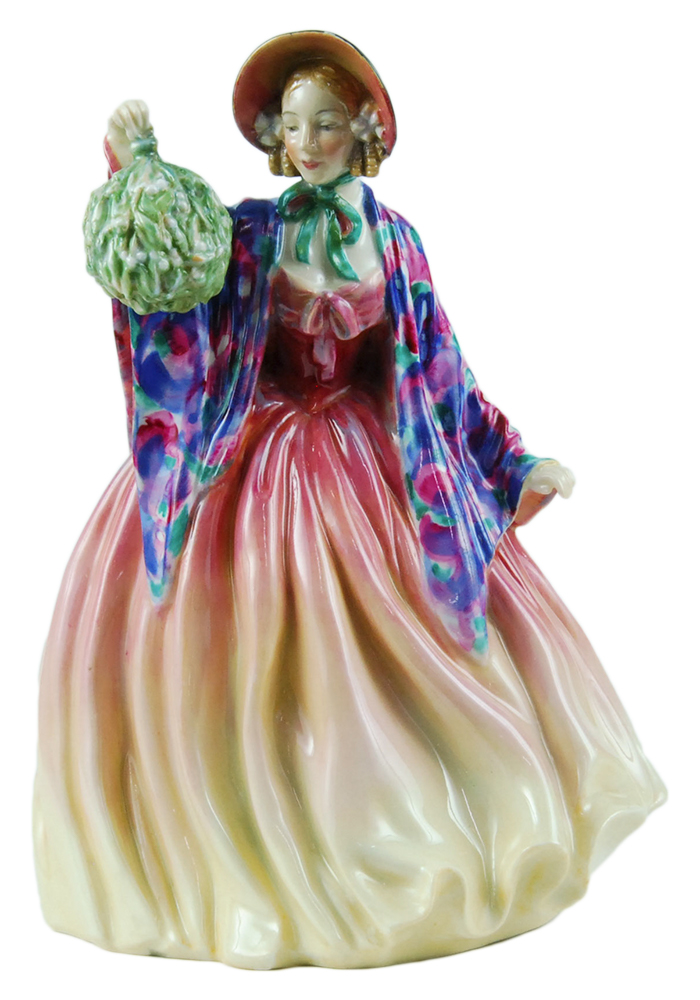
Lady Charmian #1067 by L. Harradine 1939
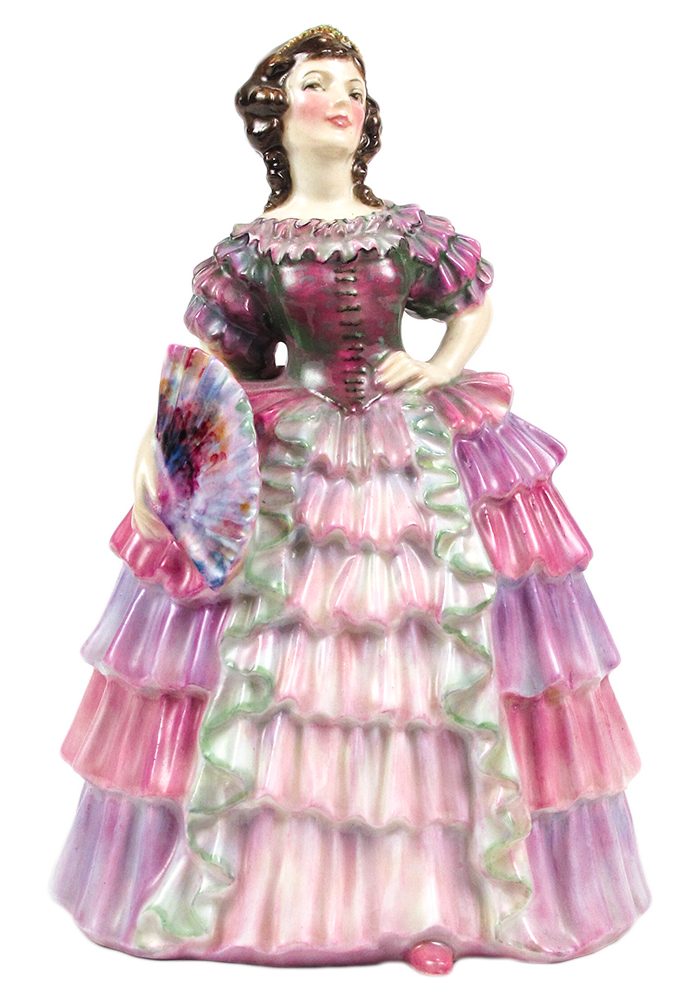
Spanish Lady with Fan #851 by L. Harradine 1934
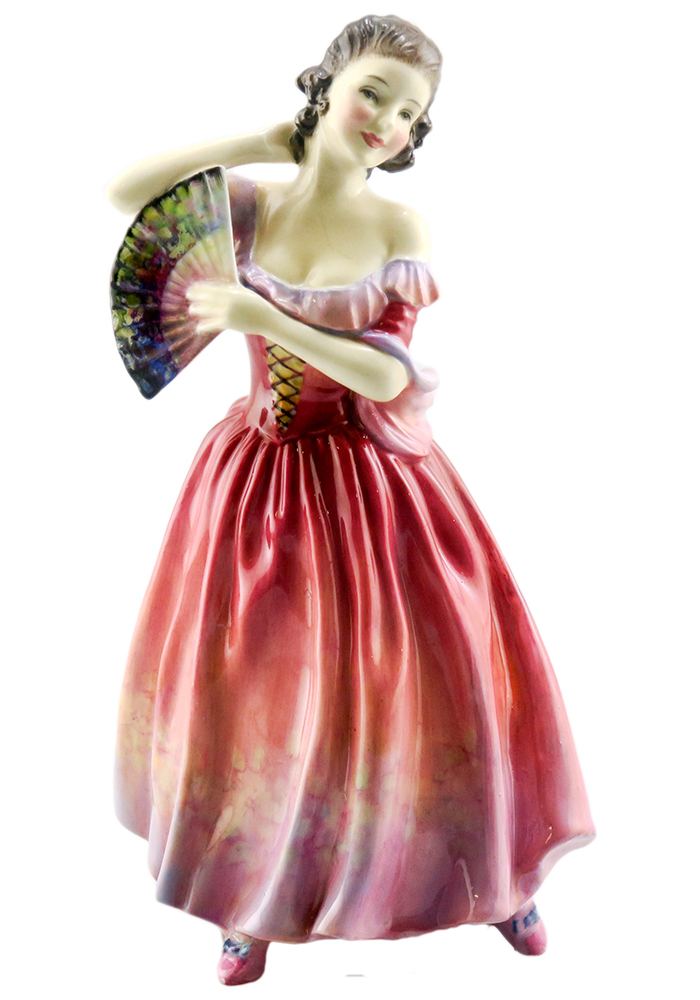
Lady with Fan #738 by L. Harradine 1941

Collinette #1284 by L. Harradine 1945
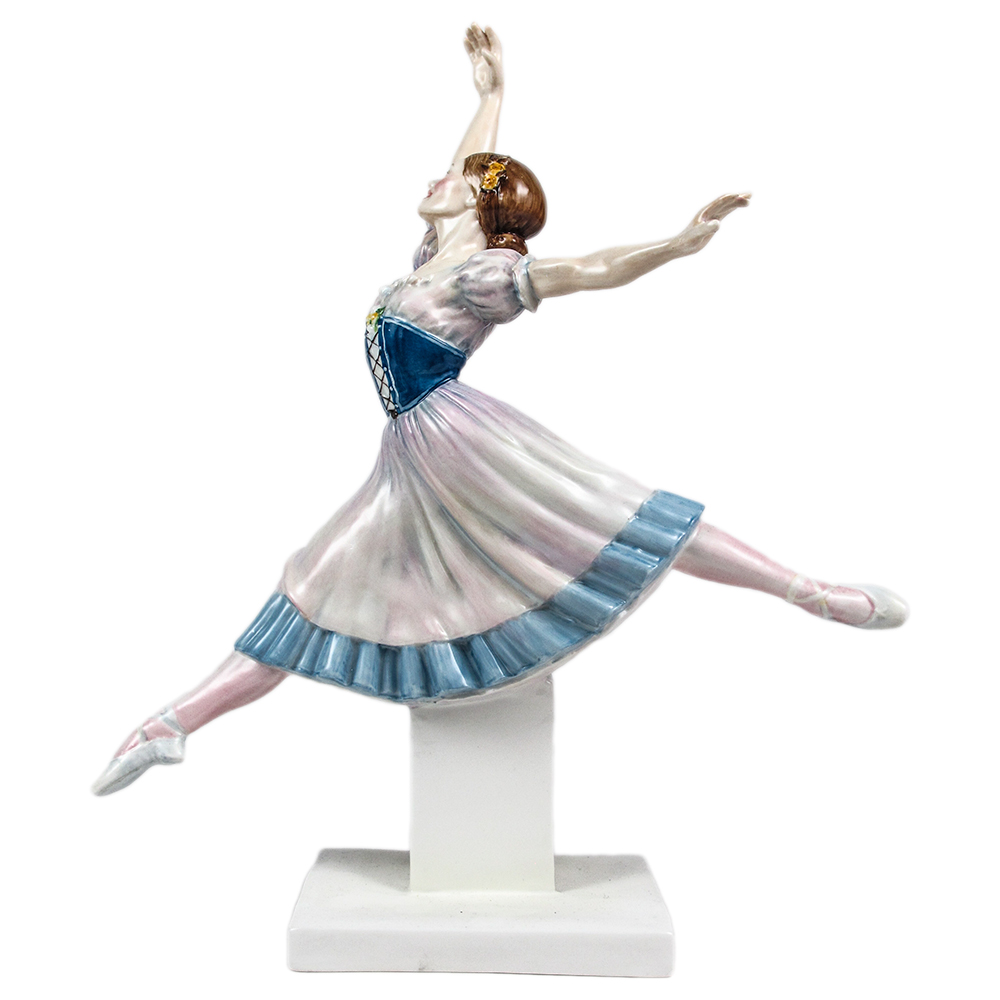
Ballet Dancer #2226 by P. Davies 1974
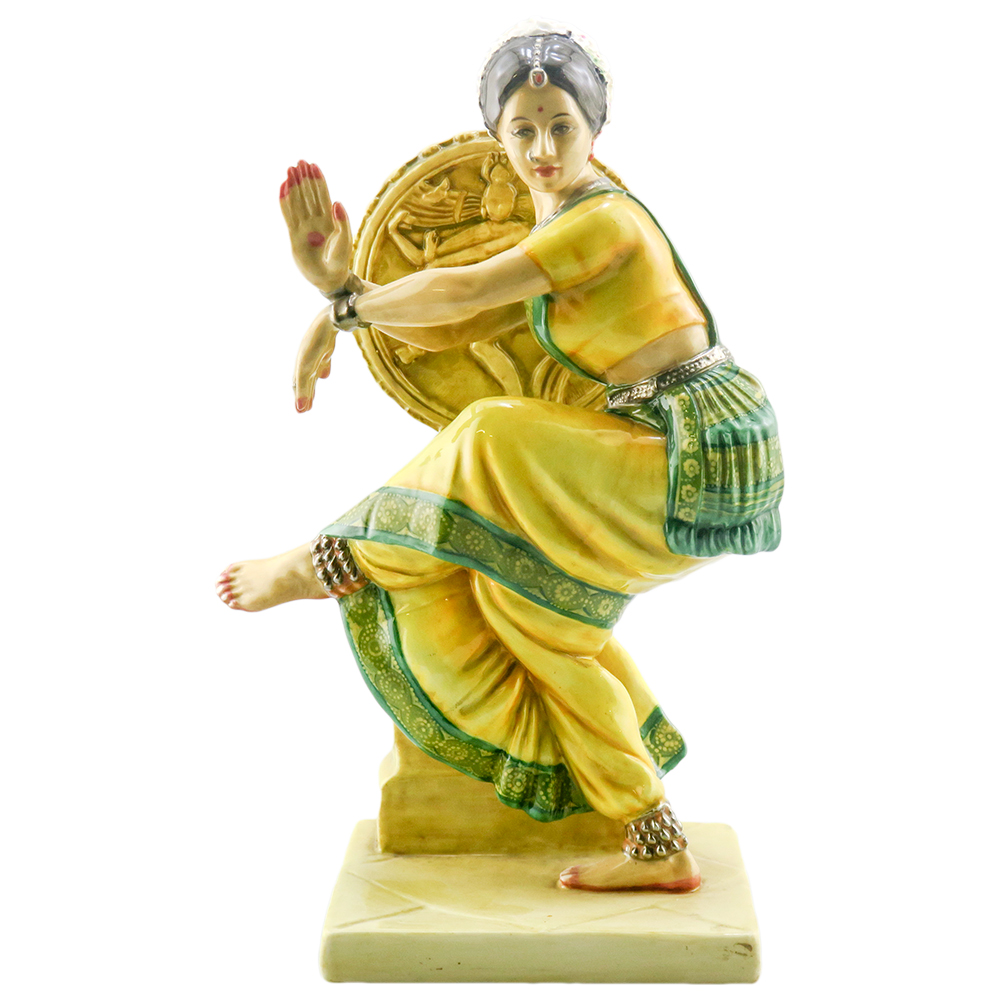
Indian Temple Dancer #2248 by P. Davies 1973
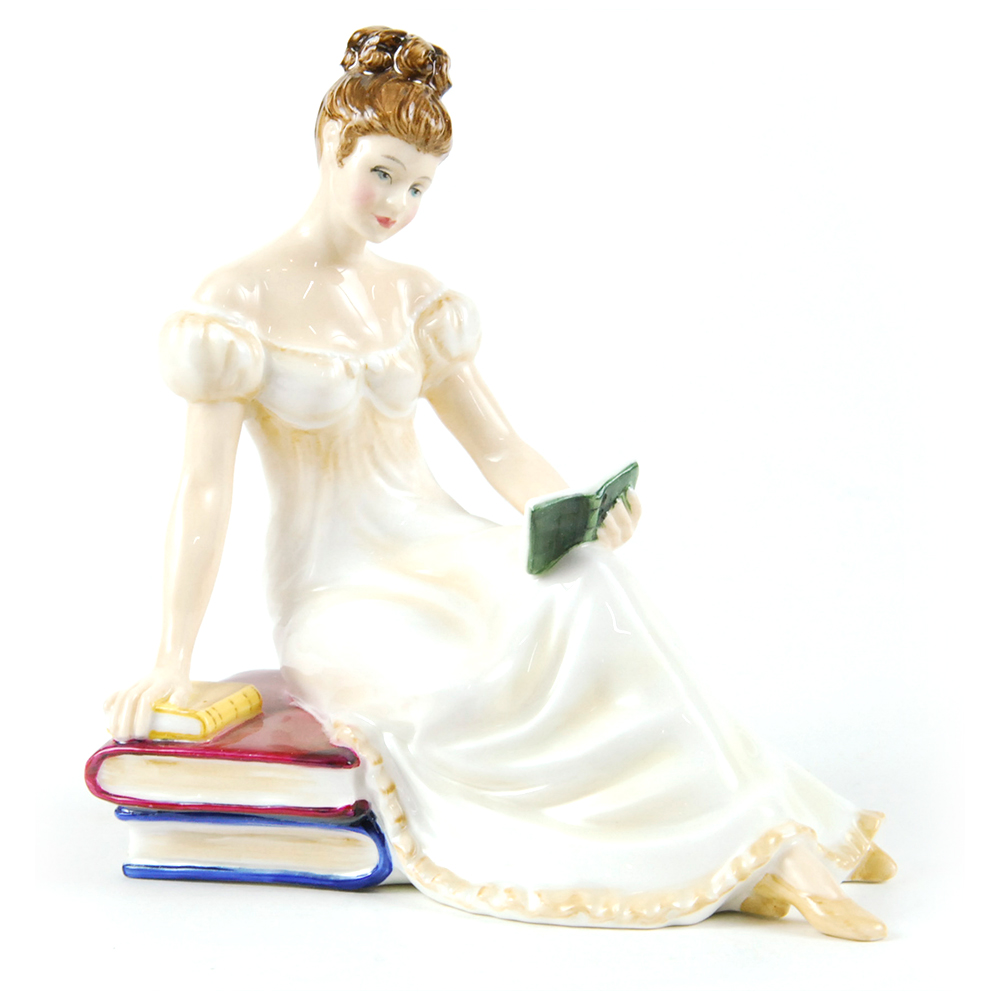
Reading Jane Austen #2229 by P. Davies 1973
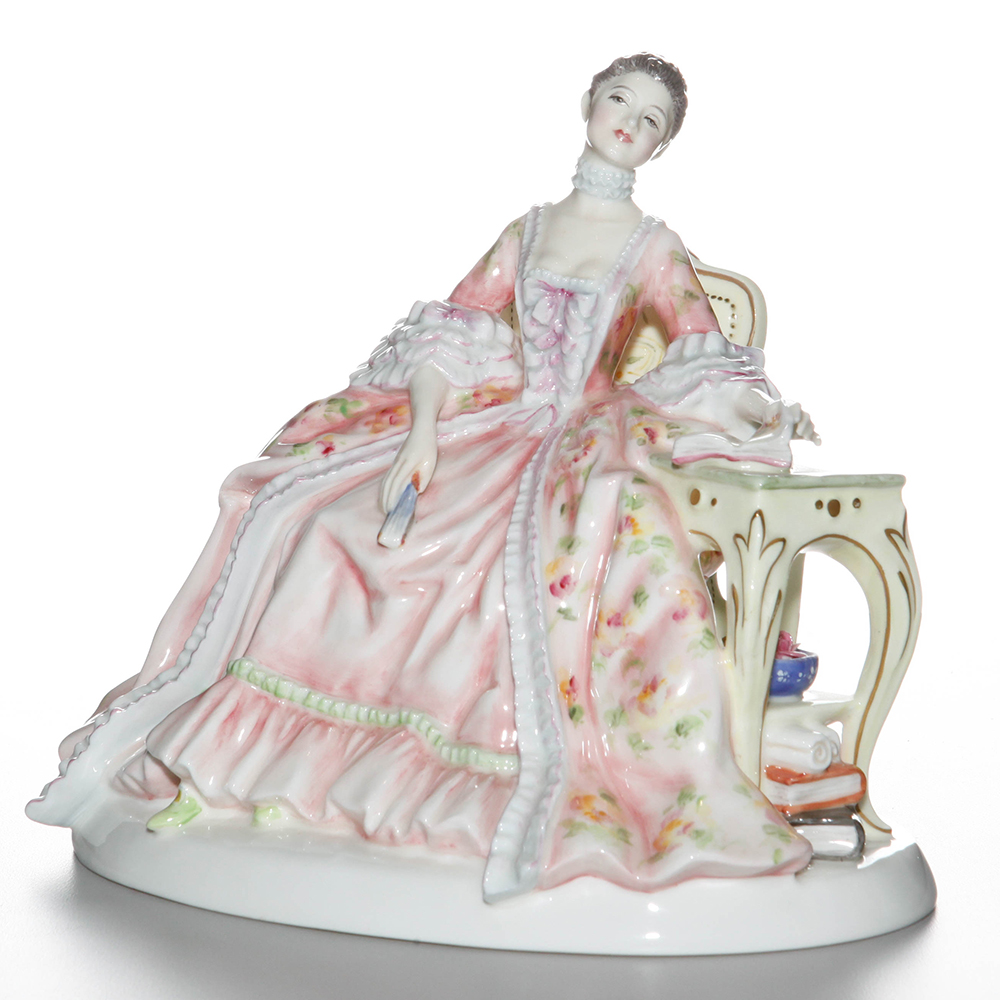
Madame Pompadour #2449 by P. Davies 1974
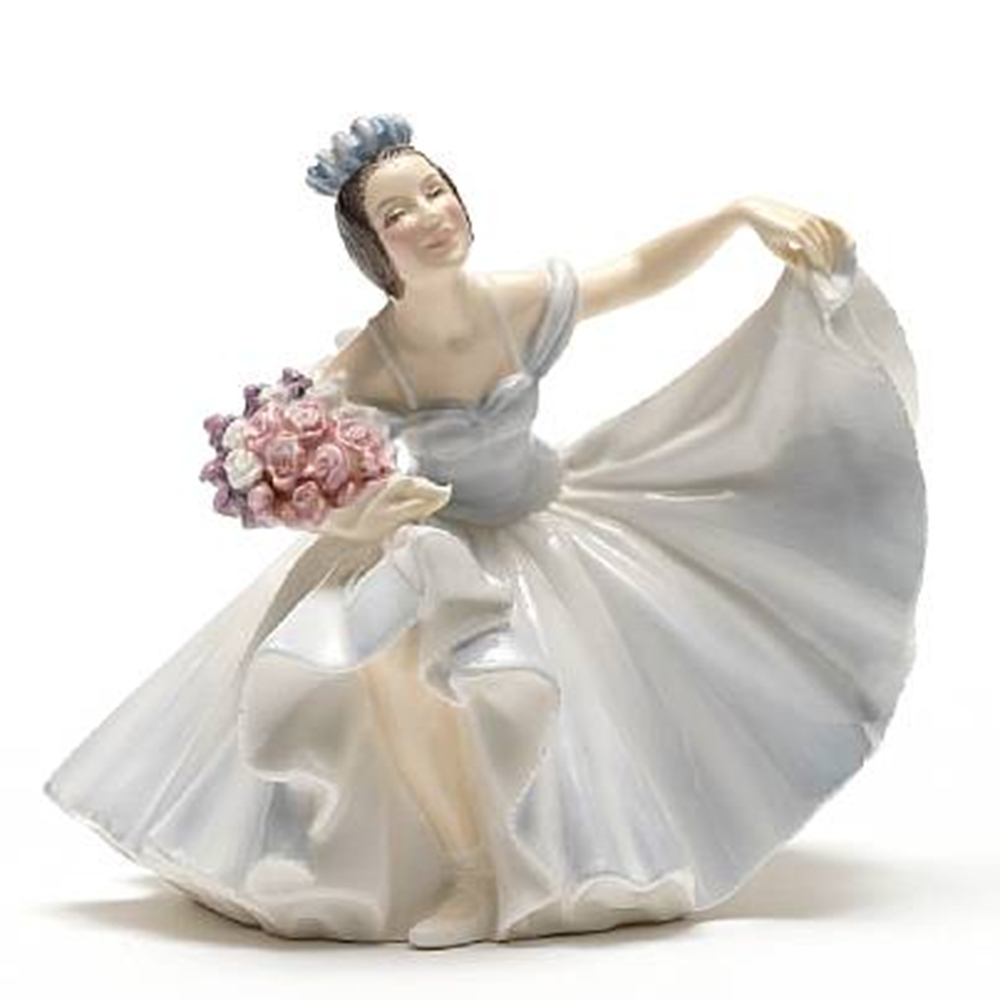
Finale #1831 by P. Davies 1961
Full of Character
Mary Nicoll was Doulton’s leading modeler of character figures from 1954 until her untimely death at the age of 52 in 1974. She was a very versatile artist, with a discerning eye for detail. She was best known for her maritime figures and her studies of endearing old folk, often with their pets. Mary was so prolific that many of her models did not go into production during her lifetime. Some of her original designs were issued in collectors editions many years after her death. The experienced sculptor, Bill Harper, was commissioned to continue the character figure tradition and modeled hundreds of designs during his 30 years with the company. Robert Tabbenor and Doug Tootle also contributed to the character figure collection. Decisions about future introductions were determined at Doulton’s design conferences and public opinion was solicited at design survey events in the USA.
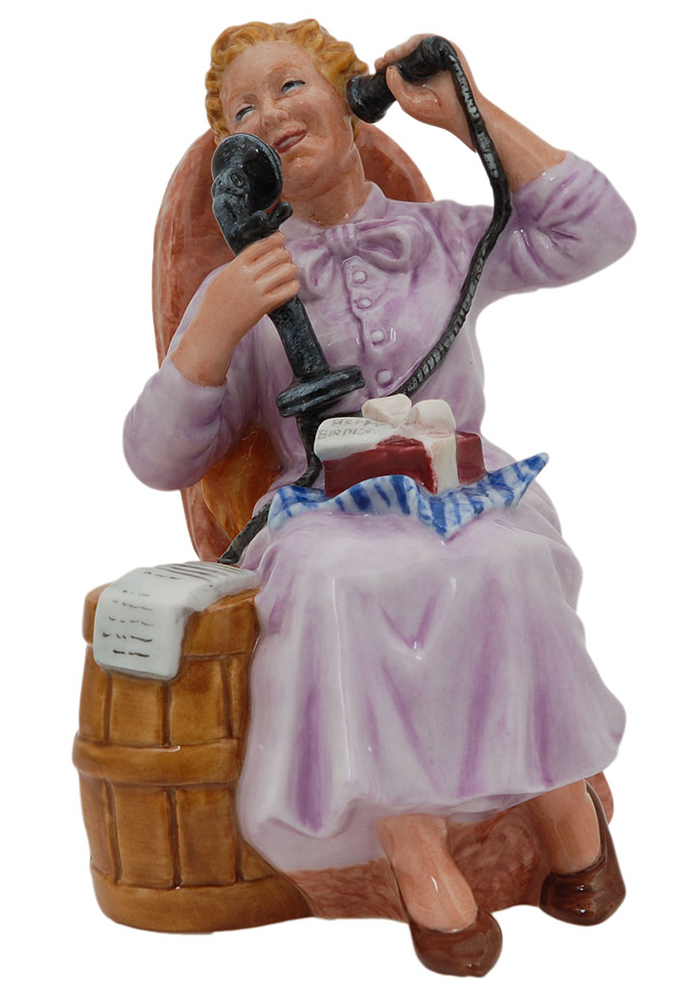
Birthday Thank You #2109 by M. Nicoll 1970
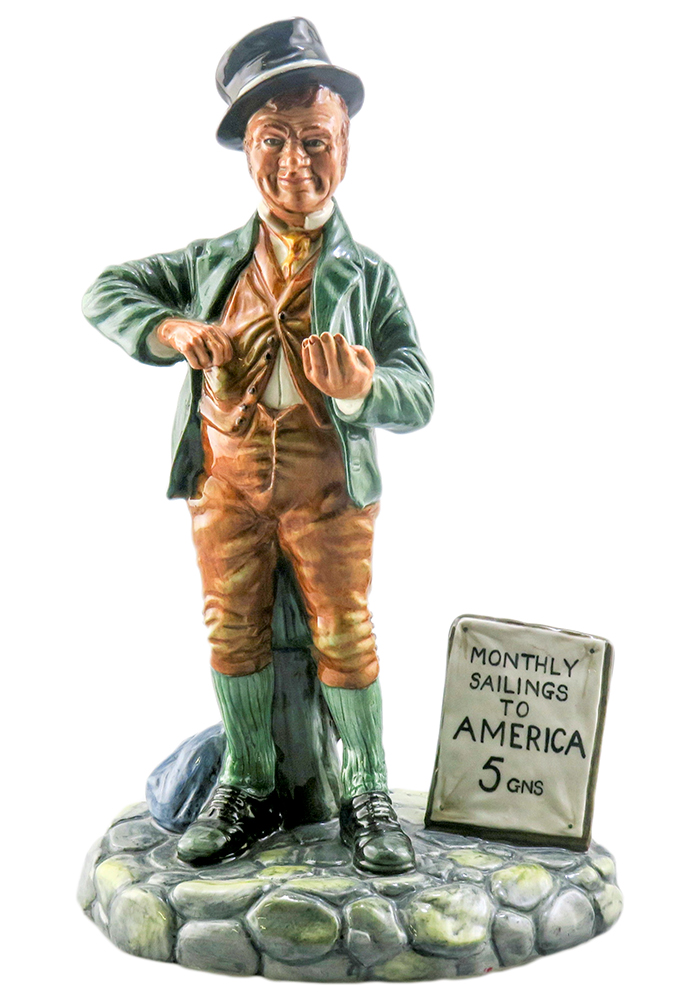
Passage to America #2617 by M. Abberley 1977
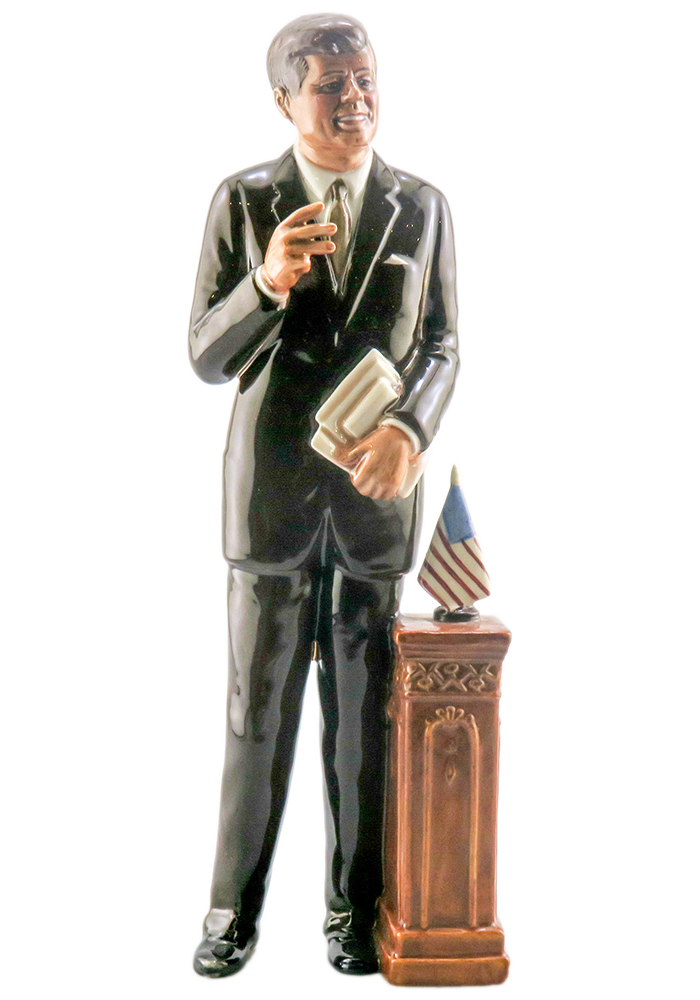
John F. Kennedy #3244 by W. K. Harper 1985
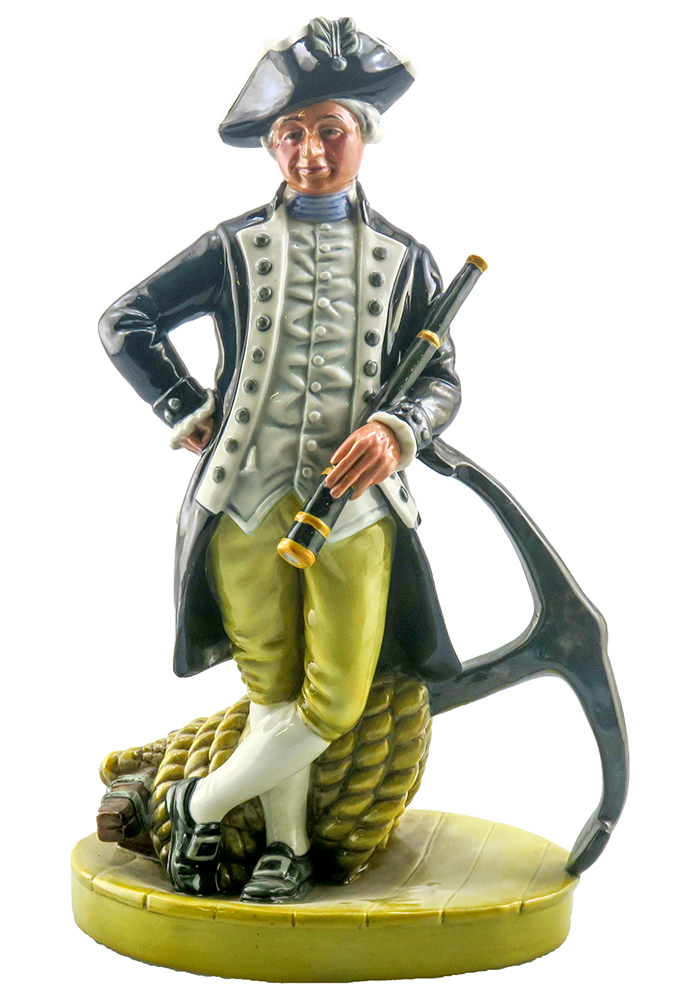
Deck Watch #2780 by W. K. Harper 1979

Railway Guard #2271 by W. K. Harper 1972

Cowboy #2322 by W. K. Harper 1972
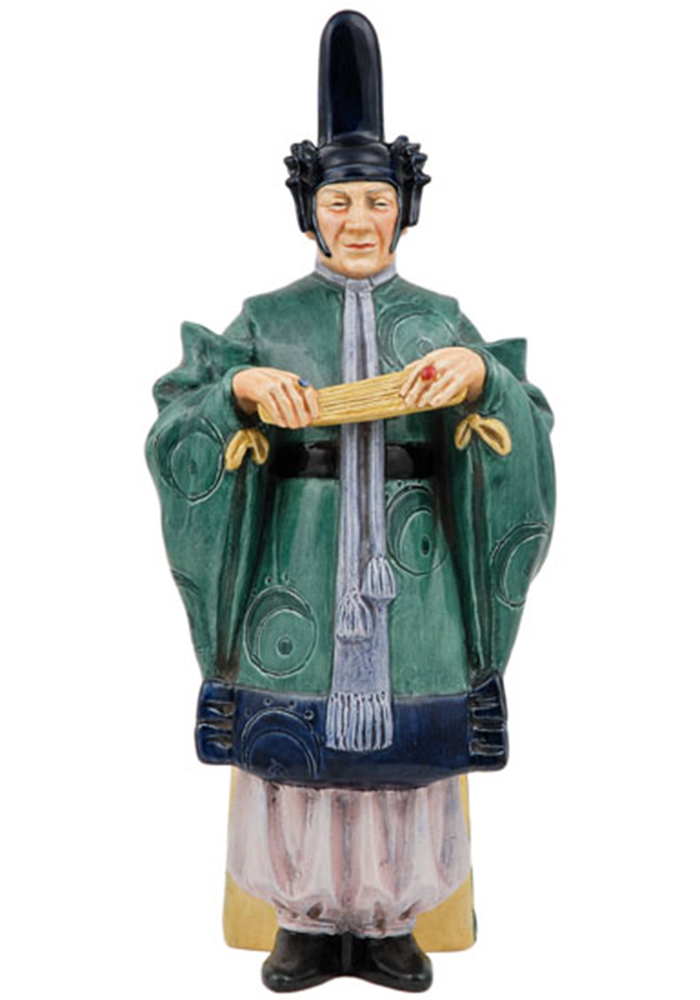
Japanese Shinto Priest #1863 by M. Nicoll 1962
The New Sculpture Studio
Eric Griffiths became Royal Doulton’s Director of Sculpture in 1974 and brought new ideas to the HN collection. He experimented with figures in modern dress, such as mini-skirts and blue jeans, but they remained as prototypes. Generally, he advocated taller figures and matt glazes, which be felt brought more character to the features. Peter Gee, Pauline Parsons and Valerie Annand developed the figurine collection in new design directions. Many of Valerie’s designs were considered too flamboyant for production. One of the most talented artists in the studio was Alan Maslankowski, who was working on a dramatic bust of Elvis Presley when he died. Tim Potts capitalized on the interest in Elvis to produce a set of portrait figures, which were made in Thailand when Doulton’s production began moving offshore in the 1990s.

Night #3658 by P. Gee c.1985

The Morning Walk #2685 by P. Gee 1984
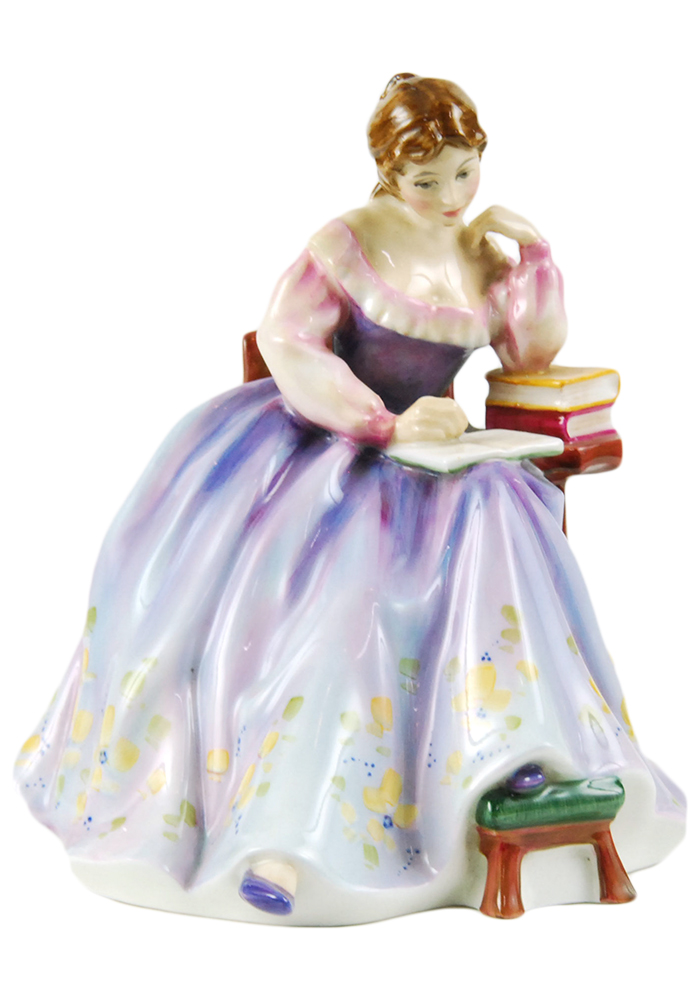
Emily Bronte #2684 by P. Parsons 1980

Till you Return#4737 by V. Annand 1998
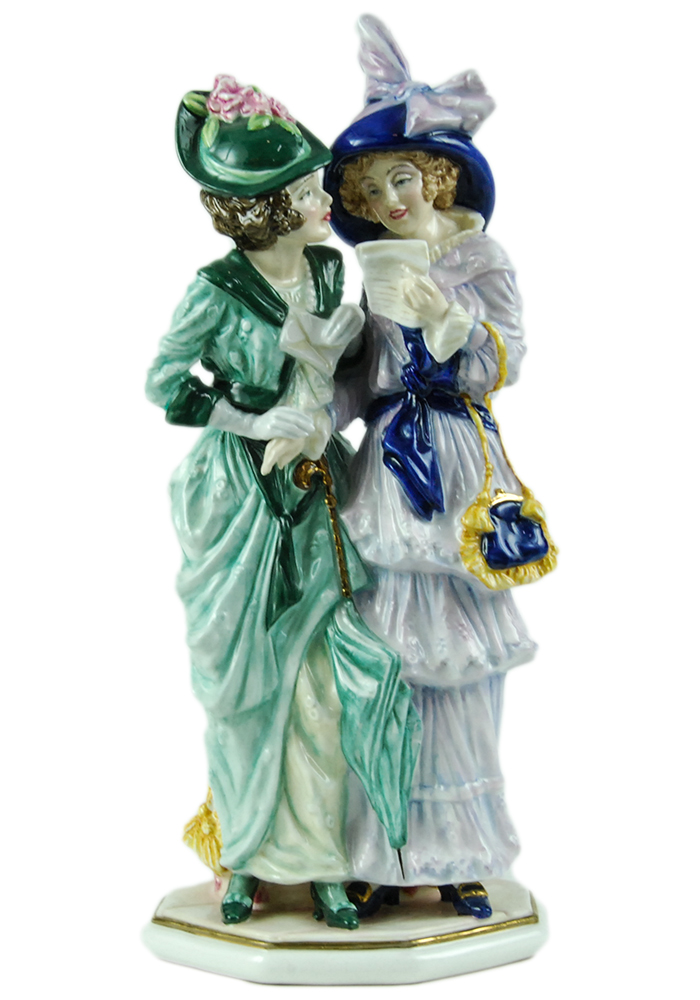
High Society Ladies #4755 by V. Annand 1998

Butterfly Lady #2875 by P. Gee 1981
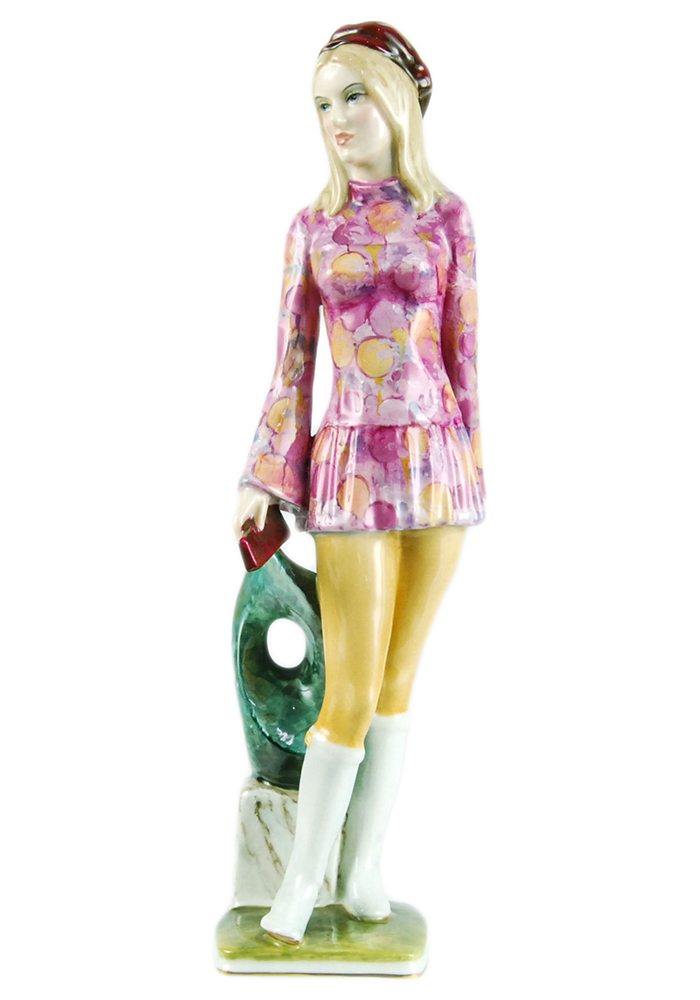
Mini Skirt #2212 by E. J. Griffiths c.1971
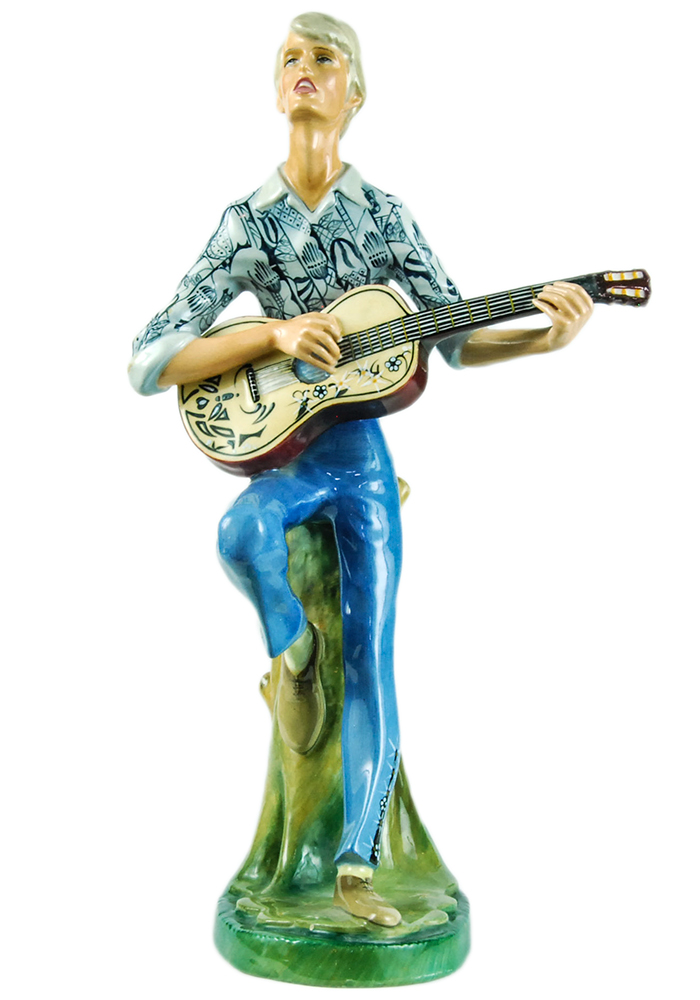
Guitarist #2185 by E. J. Griffiths 1972

African Woman by E. J. Griffiths 1976
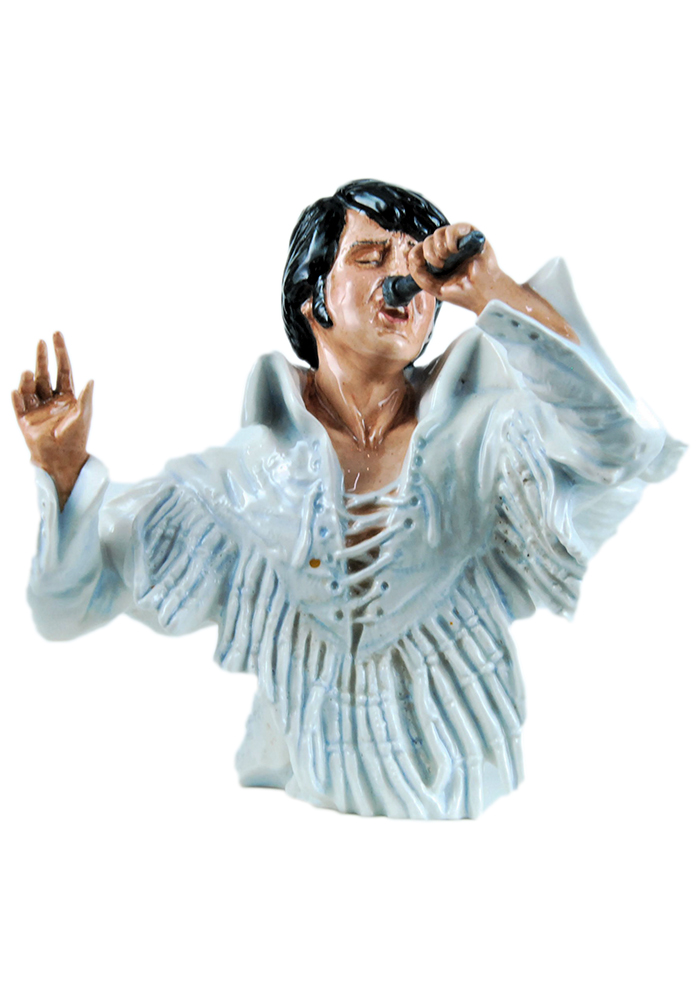
Elvis Bust by A. Maslankowski 2006
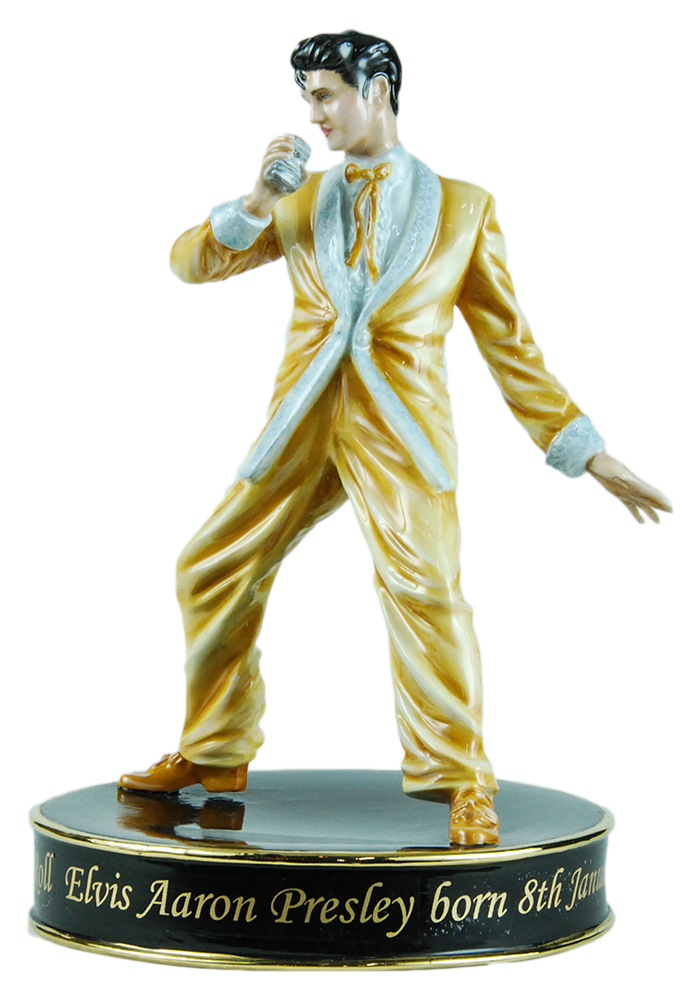
Elvis ‘All Shook Up’ by T. Potts 2005
Innovations & Experiments
Over the years, there have been many initiatives to create a new look for Doulton’s HN collection, some of which have not been developed beyond the prototype stage. Tim Potts modeled figures of sporting heroes, which were tested by the prototype painters in different glaze effects, including Doulton’s distinctive rouge flambé. At the dawn of the new Millennium, the Royal Doulton artists were experimenting with highly stylized figures from the Images, Reflections, Sensual and Studio collections. They were decorated with lustrous mother of pearl, bronze, gold and platinum glaze effects. When Royal Doulton began selling their archive collection at auction in 1999, many unique prototypes were acquired by Arthur Wiener. WMODA now has a vast Royal Doulton figure collection celebrating a century of production.
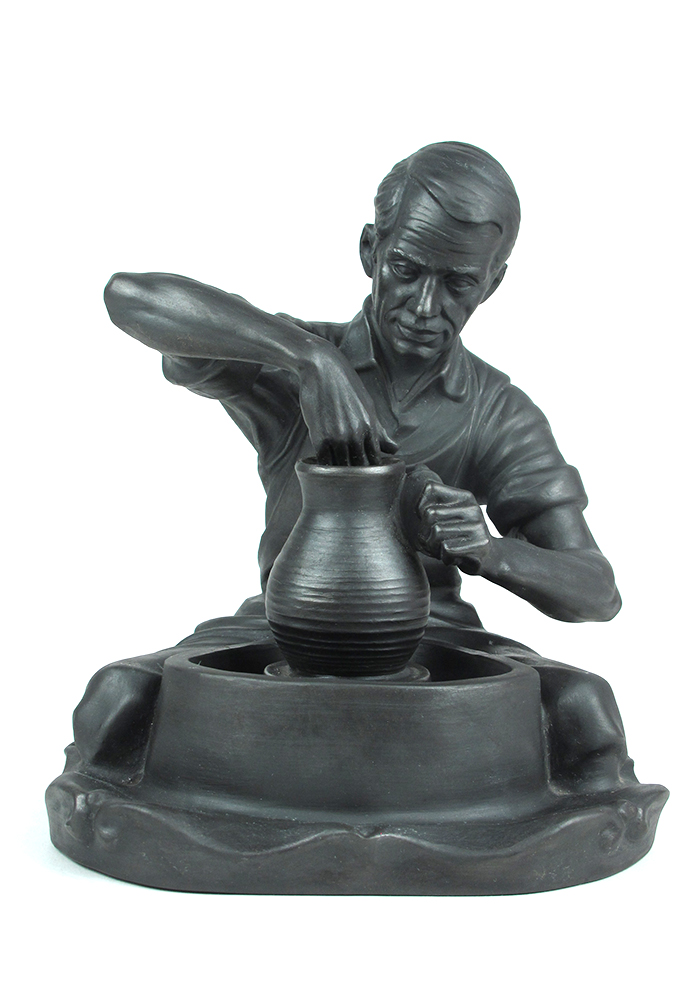
The Potter by E.J. Griffiths c.1975
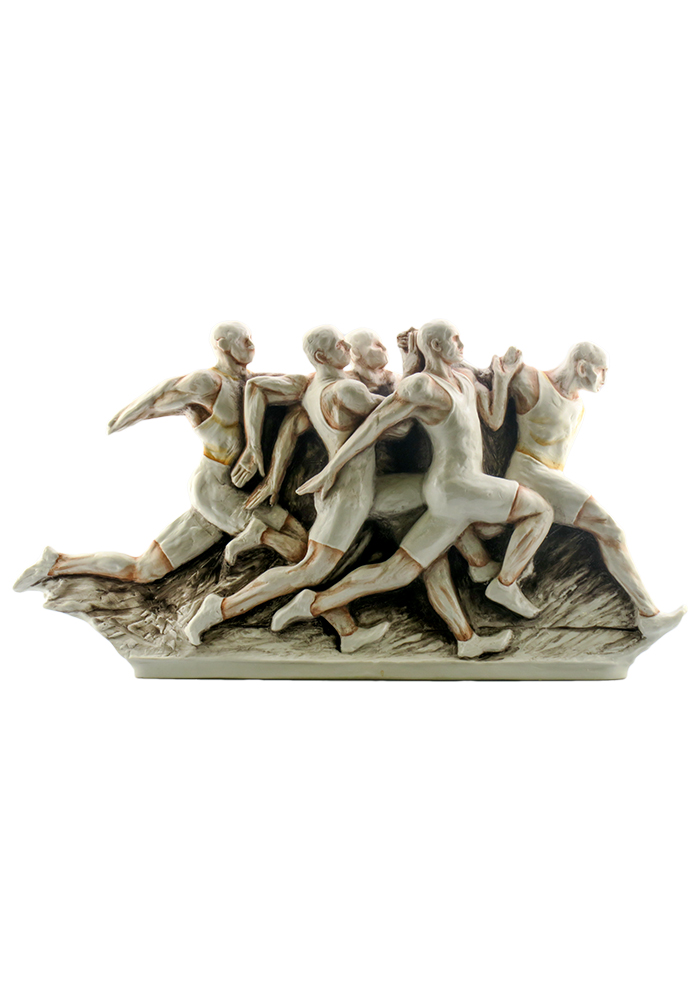
Sprinters by T. Potts 2008
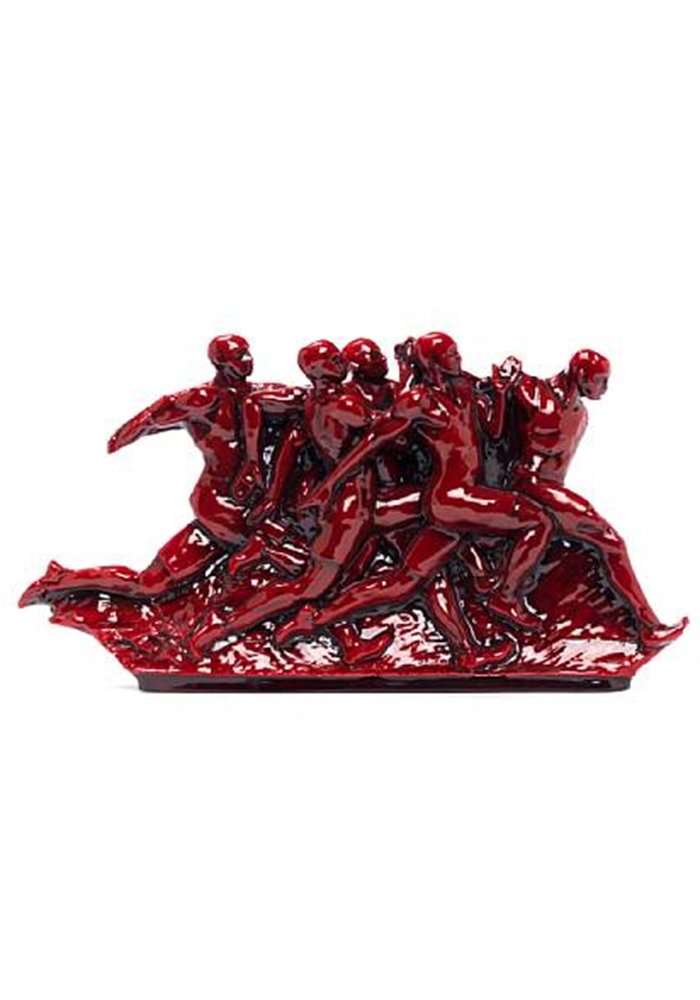
Sprinters Flambe by T. Potts 2008
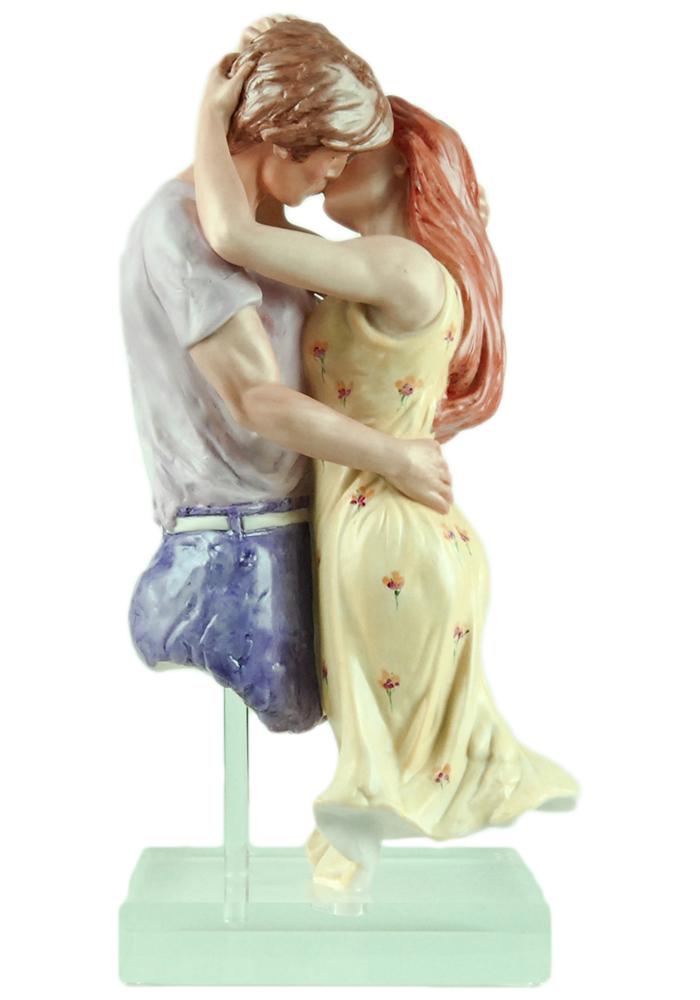
The Lovers Color Trial by A. Maslankowski c.2000
